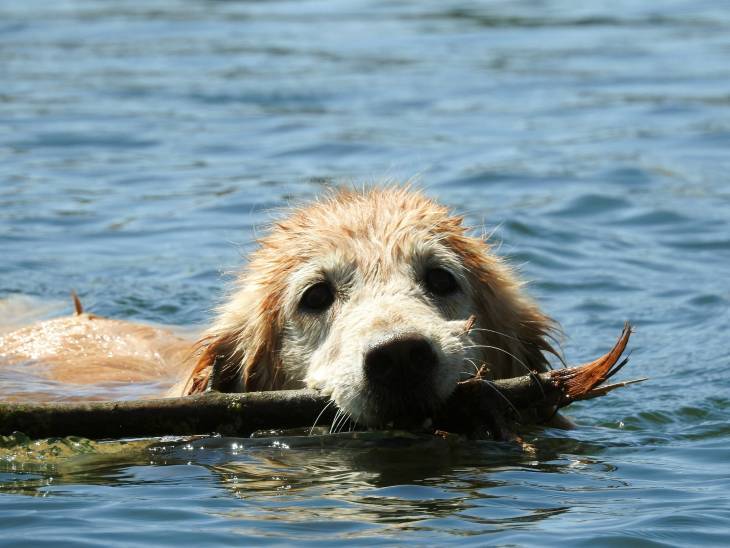Swimming Stuff: How to Remove Water in Dogs’ Ears
Dogs are pretty adept at swimming. If they weren’t, the term “dog paddle” wouldn’t exist. If you have a pooch that loves the water, there’s a chance that they may develop an ear infection caused by excessive water in the ear. Fortunately, it’s also a condition you can help prevent.
The Origins of Water-Based Ear Infections
A water-based ear infection in a dog, known as otitis externa, is not all that dissimilar to the “swimmer’s ear” condition that humans may be able to get. When your pooch goes for a swim, water could accumulate in his ears. However, because a dog’s ear shape is different than a human’s ear, it may be harder for the wet stuff to exit the canal.
Floppy-eared dogs such as golden retrievers or cocker spaniels are more susceptible to this condition than dogs whose ears are upright. Because the ears tend to fold over the canal, moisture has a greater tendency to stay within the canal. This creates a haven for yeast and other bacteria that are the cause of ear infections.
The Removal of Water: A Simple Solution
There is a wide variety of ear cleaning and drying solutions that are available to help safely get the water out of your dog’s ears. Some of these solutions contain material like witch hazel which is known to have strong natural drying properties. These particular solutions help evaporate trapped water and put infection to a halt.
You can also whip up an effective drying solution at home. A simple solution of hydrogen peroxide or apple cider vinegar blended with equal parts purified water will help to quell the infection while making it easier to dry out the wet stuff. While some people may think it's prudent to mix in alcohol into the solution to expedite things, it could cause burning and irritation to the dog's ears.
The Actual Water Removal Process

Once you have a solution ready to go, you’ll want to keep it handy whenever you know your dog will get in the water. Tackling the issue right away will help lessen the chance of an infection setting in. It will also help your pooch feel a whole lot better in the long run.
The first thing you'll want to do is dry off your dog's ears very gently. If you have a dog with floppy ears, you'll want to carefully lift his ear and gently dry the underside. Next, you'll place several drops of the solution in the ear canal, being careful not to shove the tip of the dropper deep into the ear canal.
After you have given the dog the solution, you will want to massage the base of his ear. You’ll want to do this for a couple of minutes. This will ensure that the solution is placed in the ear canal evenly.
The next step is to step back and allow your dog to shake his head. This reaction will create enough force to allow any debris that he may have come into his ear outward. Finish by wiping his inner ear with a cotton ball to remove any stubborn liquid, debris, or discharge.
The Aftermath of the Cleaning
You will want to monitor your dog’s behavior each time he enjoys the water, just in case he starts to exhibits signs of potential infection. Some of the signs you’ll want to look out for include excessive rubbing or pawing at his ears, redness and swelling around the ears, or any funky odor or discharge. If you happen to see any of these signs, schedule an appointment with your veterinarian immediately.
It’s Not as Bad of an Ordeal as You Might Think!
If you treat the process of cleaning your dog’s ear with the utmost of care and comfort, chances are great that your pooch will grow to enjoy ear cleaning. Your dog does not have access to the insides of his ear, and he can’t take care of the problem like you can, so he will get a kick out of it as long as his ears aren’t irritated. Of course, providing him heaps of praise and maybe giving him a treat or two will probably endear him to the routine even more.

